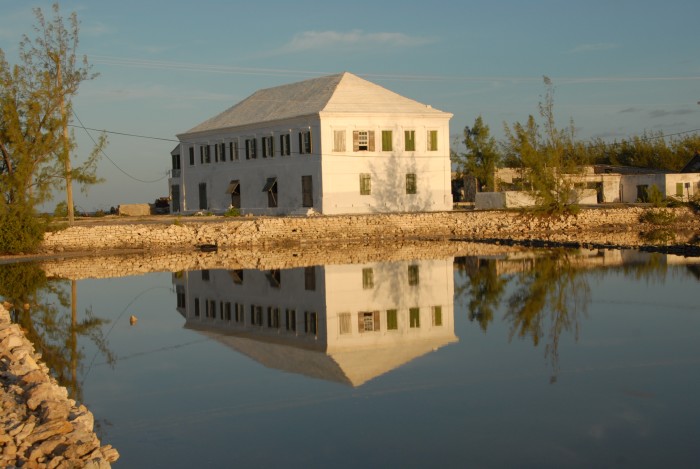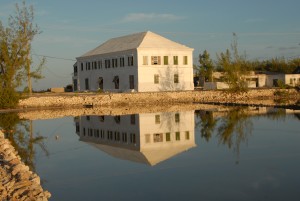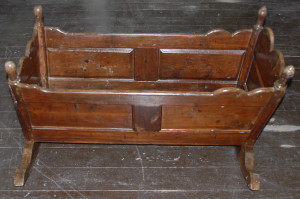7th April 2016
The Turks & Caicos and Bermuda: Shared Heritages and World Heritage

During a brief visit to Bermuda to meet my fellow Governors in the region I was fortunate to meet Dr Edward Harris MBE, the director of the superb National Museum of Bermuda. He explained some of the earliest links between our two countries, and at my request has kindly contributed the following piece about our shared heritages. He mentions the harrowing, important account by one Bermudan slave or her time in Turks and Caicos, and also underlines the importance of the maritime connections – which is appropriate as Bermuda hosts the famous Americas Cup sailing challenge next year.
“The Turks and Caicos Islands, like Bermuda, were one of the last places on Earth to be settled by humans, after the long trek out of Africa 100,000 years ago by Homo sapiens, the modern version of our kind. It was originally occupied by the Taino peoples of the region, beginning after AD 500, while Europeans became aware of it in AD 1512 after the visit in that year of the Spaniard, Ponce de Leon. The following year, he explored Florida and is thought to be the discoverer of the Gulf Stream, the largest “river” in the world that begins north of the Bahamas archipelago (of which TCI is the southern end) and sweeps northward to Iceland and Europe, keeping Bermuda for part of the year as tropical as the Turks and Caicos. Thus two islands (both still British Overseas Territories) were connected geographically, later to be joined culturally.
While known to Europeans from 1505, Bermuda was not permanently settled until 1612 by the Virginia Company of London (one of the first modern corporations), primarily as an outpost for Jamestown, where the United States was born in 1607. As such, the Island was a “company town”, with much of its scant 19 square miles divided into 25-acre lots for the London investors of the new Bermuda Company of 1615. For the next 69 years, the people who would become “Bermudians” were under the thrall of that corporation and particularly so in the case of shipping (the only international transport of the day), as they had to use Bermuda Company “bottoms” and not their own evolving vessels.
The Bermuda Company was dissolved in 1684 and the Island came under the administration of the English government, but it had its own parliament from 1620, making that internally governing entity the oldest in the British Commonwealth, after London. Thus freed from the London corporation, Bermudians took to the seas in their famous sloops, which were the fastest ships afloat in the eighteenth century. That was because of their design and build in Bermuda cedar (photo below), and also because they were powered by the “Bermuda Rig”, the greatest invention (made in Bermuda) in sailing technology after the European “square rig”. The Bermuda Rig is the fore-and-aft arrangement of sails still used by most yachts worldwide, include boats vying for the America’s Cup, though with technical and material upgrades. So Bermuda maritime heritage may be seen in most harbours and sailing races around the globe.
That maritime technology allowed the Bermudians to use and eventually settle the Turks Islands from the 1680s, mostly to extract salt from the sea. A triangular trade with the fisheries of the Canadian Maritimes, the English U.S. colonies and Bermuda begun. Salt, which is essential for life, became, from its Turks and Caicos origins, one of the economic life-bloods of Bermuda, which had little to export other than people, timber, and stone.
Bermuda also exports ideas and none is more enduring than some of the historic architecture of the TCI, particularly in the classic “White House” on Salt Cay (photo below), still in the Harriott Family who built it in the early 1800s. Bermuda architectural designs are often seen in the kitchens of early TCI buildings, with their large external chimneys, such as the one, now restored, at the Governor’s Residence on Salt Cay (photo below).
In the early years, Bermudian salt rakers went to the TCI in the winter and left with salt in the late spring, while in later years, slaves were used in the laborious work of harvesting salt from the sea in the natural and manmade “Salinas”, or salt ponds. Perhaps the most famous Bermudian to work in the TCI was the slave, Mary Prince, whose autobiography about slavery in the New World was the first such missive by a woman and became a best seller in the cause against that slavery, which was abolished in British dominions in 1833.
In recent times, archaeologists and architectural historians have begun to record the standing vestiges of the Turks and Caicos Islands, of which Grand Turk, Salt Cay, and the Caicos Islands (including Wade’s Green on North Caicos of the Stubbs Family, who are still present in Bermuda) hold significant monuments. Bermudians and Turks and Caicos islanders are involved in that process, for indeed much of that legacy is on the order of “world heritage”, given its role in the development of TCI, the West Indies and Bermuda, and the European settlement of the Caribbean and the eastern Americas.”



White House, Salt Cay Cook House, Salt Cay Bermuda Cedar Cradle
(The author: Dr. Edward Harris, MBE, JP, FSA, PHD, is a Bermudian and since 1980 has been the director of the National Museum of Bermuda (formerly Bermuda Maritime Museum). He is the inventor of the “Harris Matrix” (1973), which has been accepted in many countries worldwide as the industry standard for recording archaeological sites: the textbook is available for free download at www.harrismatrix.com.